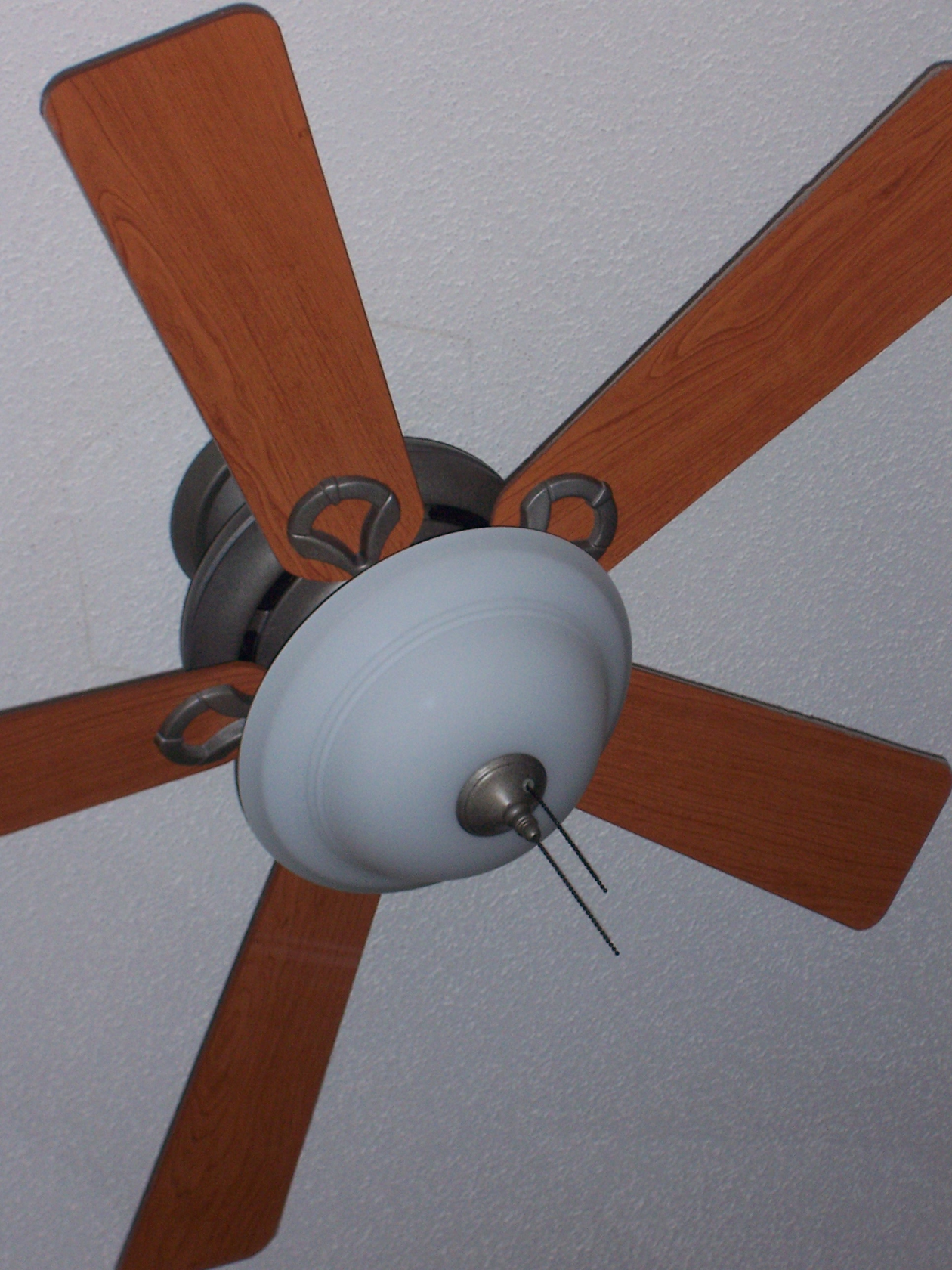A significant turning point in the history of electrical machinery was the development of different types of ceiling fans.
Despite their roots in millennia, they are of utmost significance in our daily lives.
Ceiling fans are widely used today because they have retained their reputation as straightforward and inexpensive.
There are many different types of ceiling fans. History reveals that the first type originated in India in the 17th century.
Punkha was the name of this significant air source. At that time, the Punkha was hung from the ceiling and was constructed of palm leaves or linen.
In contrast to today, it was powered manually by a cord that had to be pulled for the fan to turn on.
Philip Diehl created the first ceiling fan with an electrical motor in 1882. It first operated like a standard ceiling-mounted fan called “The Diehl Electric Fan.”
The necessity for a bulky and expensive belt system was eliminated because each fan had its motor unit.
Ceiling fans are available in a variety, are simple to install, and consume little energy. This article explains the many different types of ceiling fans.
1. Standard Ceiling Fan

As their name suggests, standard ceiling fans are the most common of the different ceiling fans.
In most classic homes, you’ve probably seen a typical ceiling fan.
Some distinguishing characteristics of this mechanical fan include its three or four blades, typically constructed of wood, MDF, plastic, or metal.
The blades of these ceiling fans are often positioned below, to the side of, or directly above the motor.
A typical ceiling fan also has “blade irons,” metal arms, and a download, a pipe connecting the fan’s mounting brackets to its motor housing.
Because of this, these fans may be attached to both flat and sloping ceilings.
Standard ceiling fans are available in many designs and may complement practically any type of décor.
For your home, you could consider traditional fan finishes like antique bronze, brushed nickel, auburn, pewter, etc.
2. Low Profile Ceiling Fan
Low-profile ceiling fans, sometimes called hugger or flush-mounted ceiling fans, are second on our list of different types of ceiling fans.
They are attached to a mounting bracket instead of a regular ceiling fan and are often installed to a downrod.
These ceiling fans are perfect for spaces less than 8 feet tall.
Because they are installed closer to the ceiling, these fans might not produce the same airflow as regular ceiling fans.
In other words, they may not be as effective at cooling as high-profile ceiling fans. Therefore, low-profile ceilings might not be the best option if you reside in a hot climate.
3. Dual Motor Ceiling Fan
As their names imply, these varieties of ceiling fans have two motors. Two horizontal rods on the fan control are two interchangeable fan heads.
Dual motor ceiling fans, often known as twin or double-head fans, have an incredibly distinctive look that instantly draws attention.
Dual-motor ceilings have a high level of utility that many traditional fans may not have, in addition to their trendy appearance.
These fans have two motors, so you may control the airflow by independently setting each motor’s speed.
Additionally, they include changeable blades that may be adjusted in various ways, including vertically, horizontally, or at a specific angle.
This enables the airflow to disperse throughout the entire space, ensuring that every nook and cranny feels the full impact of the air.
4. Energy Star Ceiling Fan
Energy star ceiling fans stand out from other ceiling fans since they are offered in hugger and regular ceiling configurations.
Because they are energy-efficient, these fans contribute significantly to financial savings.
They are better for the environment than their competitors because of their capacity to use less energy.
Obtaining a fan firm’s “energy star” label is not easy. The United States Environmental Protection Agency has set rigorous regulations that its supporters must adhere to.
To become Energy Star ceiling fans, they must also pass stringent testing methods by accredited labs.
Energy Stars claims ceiling fans with their certification have a 40% higher energy efficiency than conventional fan models.
Additionally, they have cutting-edge motor and blade designs, which slightly raise the price of these fans.
You know the kind of ceiling fan you should use if you care about the environment and want to reduce dangerous greenhouse gas emissions.
5. Remote Control Ceiling Fan
There are models of standard ceiling fans, outdoor fans, dual-motor fans, and other types of ceiling fans that can be operated remotely.
This is a fantastic option if you struggle with mobility or aren’t tall enough to pull the fan’s cord.
With a remote control, the user can quickly alter the fan’s speed, light, and blade direction.
Because of their simplicity, these units are ideal for auditoriums, rooms with very high ceilings, and spacious bedrooms.
Some remote-controlled ceiling fans have functions such as timer settings, light dimmer controls, and fan on/off switches, which improve user comfort and convenience.
Some companies even let you manage your fans on your smartphone. This allows you to text your fan and change its settings from anywhere.
Remote-controlled ceiling fans can differ significantly, except that they are operated by remote control.
They provide a vast selection of designs, styles, and finishing options.
In other words, they can differ from model to model, in addition to being one of the different types of ceiling fans.
If you become concerned that you may misplace your remote control, you can always install a wall switch as a backup.
6. Damp and Wet Ceiling Fan
Warm and moist Ceiling fans are renowned for their exceptional resilience to wet and humid environments.
Wet ceiling fans defy the odds and continue operating, unlike normal ceiling fans that moisture may destroy.
These ceiling fans are constructed with water-resistant materials, and their blades help keep them operating at their best.
This makes these units suitable for exterior installation, such as on porches and lawns.
They also boost much-needed ventilation in places that can be affected by bad weather.
Please be aware that although wet ceiling fans may sound similar, there are a few variations between these different types of ceiling fans.
Wet ceiling fans can withstand exposure to water because they are waterproof.
On the other hand, damp ceiling fans can survive moisture and humidity but not intense downpours.
7. Commercial Ceiling Fan
Business ceiling fans are the greatest choice for improving air circulation in commercial spaces, including offices, shops, restaurants, and shopping centers.
These kinds of fans are made for rooms with 10 to 25-foot-high ceilings.
Commercial fans are turned forward during the summer to create airflow that lowers the temperature by 8 degrees Fahrenheit. This is perfect for areas without an air conditioning system.
The strong circulation of commercial ceiling fans will keep the room cool without increasing energy costs.
They can also run oppositely during the winter, helping warm air enter a place and stay tolerably warm.
One of the different types of ceiling fans, the commercial fans, are available in various designs, including modern, rustic, and other traditional styles.
It is generally best to pick one that complements the decor of the area where the fan will be installed.
8. Industrial Ceiling Fan
As their name suggests, industrial ceiling fans are made to withstand the demanding conditions in an industrial setting.
These fans are made specifically to create a lot of airflow in large, open environments.
As a result, employees are given the best working circumstances.
A large residence faces different airflow issues than a huge, open facility like a warehouse or factory.
Industrial ceiling fans are needed in factories, warehouses, and other large locations because they are made to deliver excellent ventilation while being reasonably priced.
If you believe the fan’s improved performance will compromise its aesthetic appeal, think again.
Industrial fans not only have excellent coverage and airflow, but they also have a pleasing appearance.
They are also included in this list of the different types of ceiling fans.
9. Outdoor Ceiling Fan
If there isn’t enough airflow, your normally pleasant outdoor space can turn uncomfortable during the summer heat.
This is why it’s so important to install an outdoor ceiling fan. As a decorative item, an outdoor ceiling fan can significantly benefit a deck, patio, or porch.
Compared to other types of ceiling fans, outdoor fans come with many extra features, such as lights.
Therefore, you can brighten your outside area in addition to cooling it.
You are mistaken if you believe an outdoor ceiling fan won’t go well with your outdoor décor.
There are various outdoor ceiling fans, including traditional, modern, and even a combination!
10. Agricultural Ceiling Fan
Without adequate ventilation, farms create an uncomfortable climate that is challenging for humans and animals.
For this reason, it’s crucial to have agricultural ceiling fans that provide sufficient air intake and maintain a comfortable temperature for personnel and animals.
Additionally, the ceiling fans lessen unpleasant farm aromas and stop the growth of fungi.
That’s not all, though. These fans can endure moist circumstances that bother workers and help dry wet animal bedding and flooring.
We’ll draw the curtains on this list of different types of ceiling fans here!
Conclusion
As you’ve read in the article above, there are different types of ceiling fans you probably didn’t know about.
Your ability to choose the right ceiling fan to put indoors and out will be much easier now that you understand the different types of ceiling fans. All the best!








